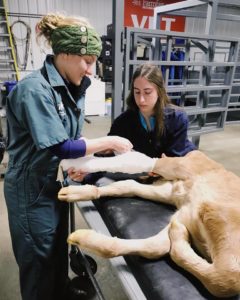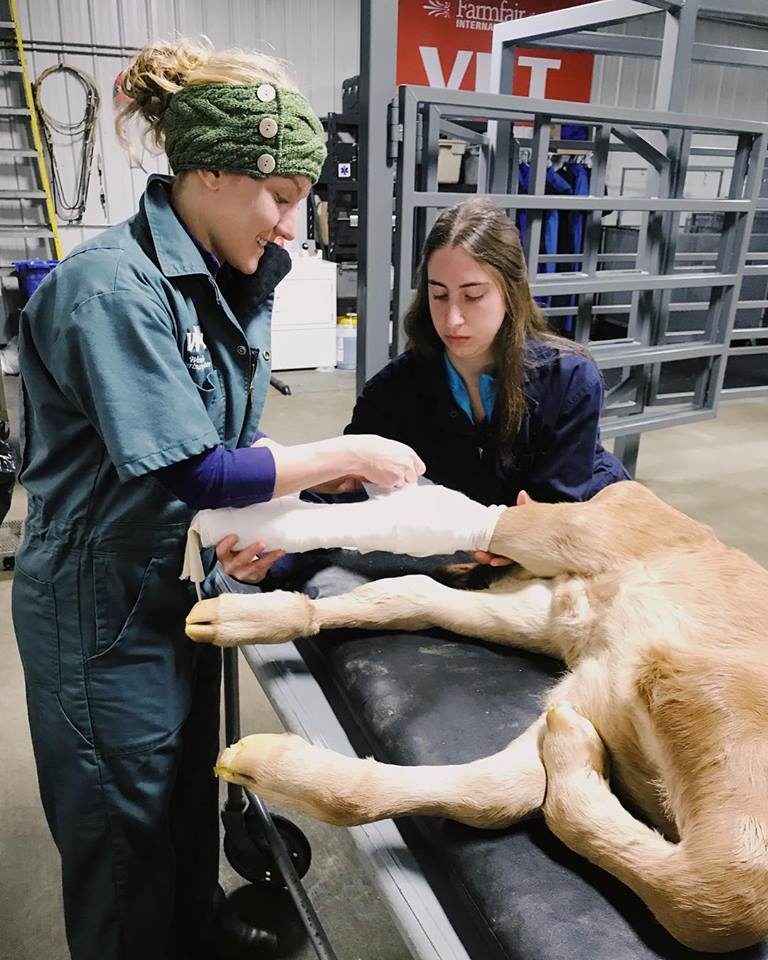Uncategorized
Covid-19 Processes
*March 14, 2020, we will continue to update our clients as more information on Covid-19 becomes available or processes change.
At Westlock Vet Center the medical experience of our clients and patients is always our main focus. Now, more than ever, in light of the evolving COVID-19 (Coronavirus) situation, we are focusing on the health and safety of all our clients, patients and employees, without compromising the quality of our veterinary services.
We are closely following the latest information, protocols and tools from the world’s leading health experts and government authorities – including the World Health Organization and Centers for Disease Control – to maximize the effectiveness of our response.
As always, we have stringent practices around sanitization, disinfection and cleaning of all areas of the clinic. We follow rigorous infection prevention and hygiene protocols. The WHO has several recommendations to reduce exposure to a range of illnesses, including hand and respiratory hygiene as well as safe travel practices. There are hand sanitizer stations throughout the clinic for both staff and clients to use on top of already strict washing protocols.
In the interest of all of our clients and staff, the WVC team requests that any clients who are exhibiting symptoms such as fever, cough, shortness of breath, or breathing difficulties refrain from coming to the clinic and consider having a friend or family member bring your pet, or reschedule the appointment entirely. Please call us at your earliest convenience if you have to cancel or reschedule and we will be happy to do so. We have also encouraged staff to stay home should they be experiencing symptoms or if they have travelled internationally. WVC staff members will be minimizing direct human-to-human contact while following all CDC recommended hygiene practices.
The World Health Organization has also stated, “There’s no evidence that dogs can spread the disease or that the disease can cause an animal to fall ill.” We have taken precautionary measures to ensure your wellbeing, along with that of your pets and our employees.
We are doing everything we can to provide a safe and sanitary experience when you visit us. Thank you for your understanding.
If you need to reschedule please call us 780-349-3663
Lung Worm
Recently we have been seeing cases of lungworm in cattle and while it is normal to see a few every year, outbreaks are certainly more common during wetter summers like the one we’ve been experiencing. Lungworm is a parasitic infestation of the bovine respiratory tract ingested from grazing contaminated pasture.
Just like gastrointestinal worms, animals become infested by eating grass contaminated with infective larvae.
However, the difference is, once ingested the larvae migrate through the bloodstream into the lungs where they develop into adults, once in the lungs they cause damage to the air sacs in the lungs and live in the bronchial tubes. Once they are adults they produce a tremendous amount of eggs, the eggs are then coughed up out of the lungs into the trachea and swallowed. These eggs become larvae and are passed in the infested animals feces. The entire cycle takes about one month.
Lungworm is typically seen in older calves from July to October. If left untreated, the disease may not be noticed until after cattle are brought home from pasture. Widespread coughing in a herd is the most notable sign but signs also include weight loss, diarrhea and laboured breathing. Death can occur in heavy infestations.
Finding these larvae in manure is one of the ways we can diagnose the condition. It is a different test than looking for the intestinal worm eggs. While it is treatable, many factors play into what we may recommend for your herd.
If you suspect this pest or have more questions give us a call!
780-349-3663
Potomoc Fever
*ADVISORY*
It’s that time of year again!
It’s been a long wet summer, and we have been starting to see horses with Potomac Horse Fever(PHF) here at WVC.
Potomac horse fever is a potentially fatal gastrointestinal disease that strikes in the late summer months. The disease is infectious, but not contagious between animals. It can effect any breed, sex or age of horse.
It is a disease caused by a microscopic bacteria that grows and multiplies in fresh water. The bacterium, called Neorickettsia risticii, has a critical step in it’s lifecycle that involves snails and insects. It is suspected that horses ingest the insect and bacteria accidentally while drinking standing water or grazing nearby.
While the most common signs of PHF are fever accompanied by loss of appetite, lethargy, and severe diarrhea. Here is a list of the many clinical signs.
• Depression
• Anorexia (not eating)
• Fever
• Colic
• Soft manure/diarrhea
• Dehydration
• Laminitis
• Abortion (occasional)
• Death
Prevention includes limiting exposure to freshwater streams, ponds, dugouts, or other natural water sources especially when insect activity is at its peak. There is a vaccine available; however, PHF has many different strains, which can cause the vaccine to fail as there is only a single strain in the vaccine.
PHF progresses quickly and can be fatal, however it can be treated. Survival rates depend strongly on quick intervention. If you notice your horse is a bit “off” or is showing the above signs of PHF give us a call.
780-349-3663
Calves with Broken Legs
This time of year we see a fair number of calves with broken legs.
Typically the calf is a few days old and gets stepped on by over eager, protective moms.
The good news is, these breaks can heal with a little TLC, especially in young calves with fractures of the lower leg. A broken leg calf, with appropriate care, casting, and monitoring generally has a good prognosis. Although it can depend on the location, a cast is applied, left on for 4 weeks and a positive outcome expected!
If you have further questions on casting calves with broken legs, please give the clinic a call.
780-349-3663
This little guy was only a day old when he fractured his back lower leg.
Thanks Dr.Lewis and RVT Cassandra for getting him on the road to recovery!


broken leg calf
We want your TICKS!
March is Tick Awareness Month!
Ticks will become active at temperatures as low a zero degrees. Ticks are more than just a nuisance, they can transmit diseases to both animals and humans. This is why we wanted to post a friendly reminder that we are participating in The Alberta Governments “submit-a-tick”program, where they will collect ticks from across the province to determine species and what diseases they might be carrying.
Their mission is:
- to identify the tick species present on dogs and cats across Alberta.
- to characterize the tick-borne disease agents carried by ticks on dogs or cats in our region
- to better understand and communicate the risks to Albertans
So how does it work?
-Bring your cat/dog and/or their ticks to WVC. We have all the necessary supplies to submit your pet’s ticks, free of charge.
-We send the ticks from your dog or cat with an accompanying submission sheet in to “Submit a Tick”
-The AB Government will report back to us the type of tick and if it was carrying any disease
To learn more check out the website.
https://www.alberta.ca/lyme-
How To Remove a Tick
Here’s a step by step guide to removing a tick.
- Use fine tipped tweezers or a tick removal tool
- Spread your pets fur
- Gently grasp the tick’s body as close to the skin as possible
- Very gently pull straight upward in a slow, steady motion
- Don’t twist the tick as you might break the body from the head, leaving the head imbedded in your pet
If you feel uncomfortable doing this, bring your pet in and we are happy to help!




